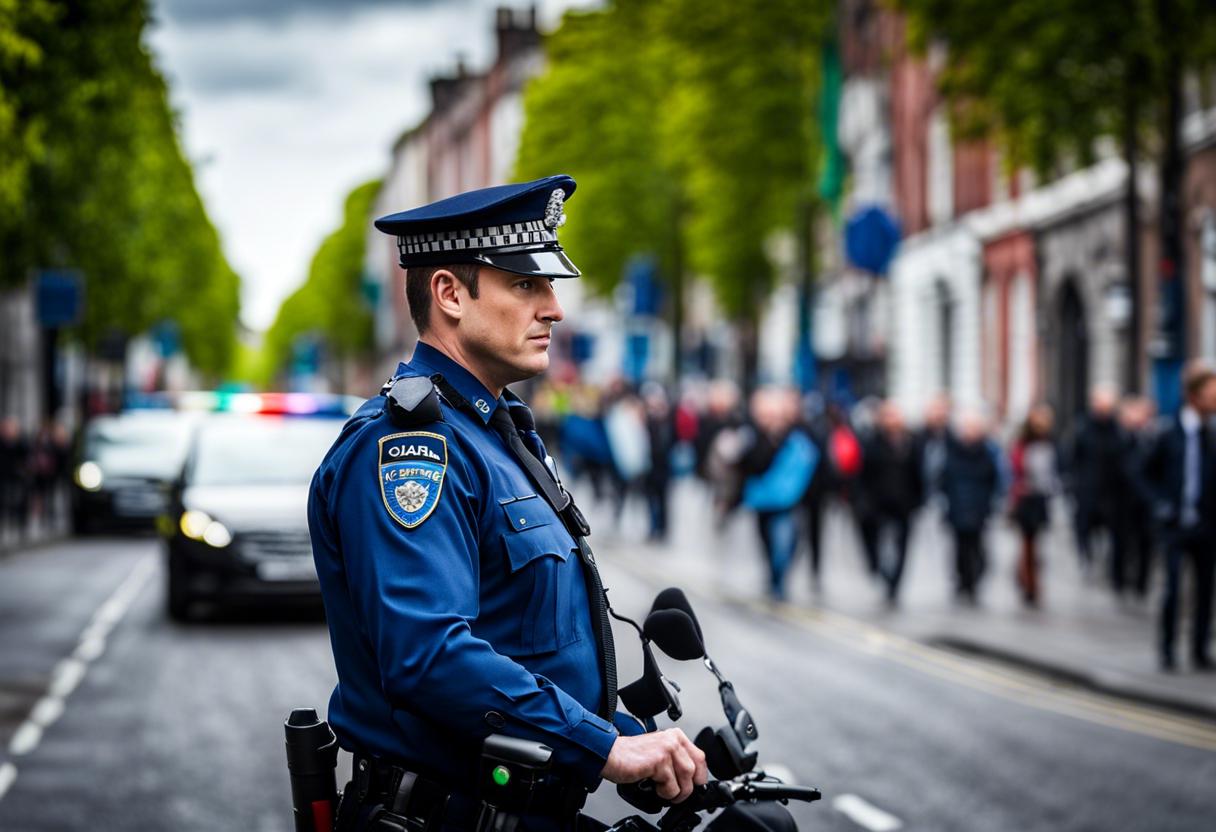In a landmark progression for Ireland’s law enforcement, approximately 150 officers from the Dublin Garda will begin utilising body-worn cameras to collect evidence from Friday morning onwards. These pieces of equipment, which have been introduced for use following a significant and rather sudden roll-out, can serve as immediate tools for procuring evidence against individuals suspected, including protesters affiliated with radical right-wing groups.
In addition to the 150 officers equipped with the initial round of training in using these devices, preparation for an additional 200 Dublin-based Garda officers is scheduled within the upcoming two weeks. Following this, the programme will be extended to include Limerick and Waterford cities.
Legislation has permitted the usage and processing of the footage recorded by these body-worn cameras since December of last year – facilitating it as evidence. The cameras will be manually controllable, featuring a flashing red signal or live-streaming screen to signify to the public when recording is taking place. Although Garda officers will verbally indicate the start of a recording process, there is no legal necessity to inform the public while recording in public spaces. However, for private residences, notification must be provided unless it poses a safety risk to the officers.
To commemorate this new development in policing, Taoiseach Simon Harris, Minister for Justice Helen McEntee, and Garda Commissioner Drew Harris will host an event at the Store Street Garda station in Dublin’s northern inner city on Friday morning. Garda officers from this station, along with the Pearse St and Kevin St stations in the southern inner city, will be the inaugural users of the new body-worn cameras from 9am on Friday. The progression of this scheme is planned to include the Henry St Garda station in Limerick and Waterford City in the forthcoming months. They are among the first to adopt the scheme, having recently managed some of the city’s most severe street conflicts and riots within the past year.
The initial dispatch of body cameras will involve about 700 Garda members across five stations. A countrywide distribution to every Garda station in the Republic is slated to commence in approximately 12 months. The vast majority of the first wave of Garda officers to be equipped with the cameras will be uniform frontline personnel. Nonetheless, from later in the summer, some of the detectives stationed in Waterford will also utilise these cameras.
The forthcoming nine to 12 months are set to be an effective ‘proof-of-concept’ project, during which the cameras, the legislation that governs their usage and the technology they are built on, will undergo a live trial and learning process. Despite this, video footage will be promptly collected and stored, and its usage to substantiate prosecutions can commence from Friday, because the scheme has immediate legal grounding.
The Garda Representative Association, representing gardaí of various ranks, and the Association of Garda Sergeants and Inspectors, have both advocated for the adoption of the cameras for numerous years. As the senior Garda management grows increasingly concerned about the quantity of work generated by reviewing and processing video footage collected from various sources for crime prosecutions, they are of the view that the video evidence garnered from body-worn cameras will significantly cut down on the prosecution time based exclusively or in part on video evidence.
Moreover, the senior management expects that the cameras, particularly when used by large contingents of gardaí at the same location, will play a crucial role in identifying suspects during disorganised public order incidents, such as violent protests, and connecting them to physical assaults and issued threats.
However, as well as aiding the Garda in pursuing suspects, the video footage could also be submitted by the public as evidentiary support when lodging complaints, up to criminal allegations, about individual gardaí to the Garda Síochána Ombudsman Commission. Footage could also be requested in cases of civil disputes, including those related to road accidents, through court order.
The footage recorded by the cameras is immediately transferred from the physical devices to the cloud once the devices are plugged into a charging terminal at a Garda station. These charging and footage-transfer stations have been installed and tested in the Garda stations in Dublin, Waterford, and Limerick and will become fully functional in the Dublin stations from Friday morning.

